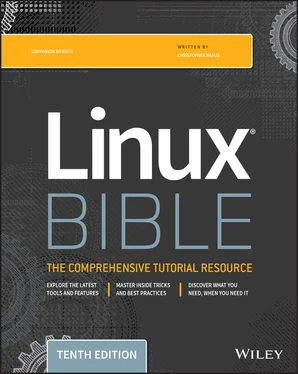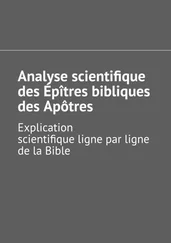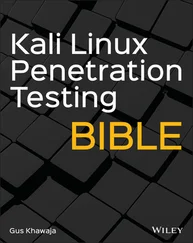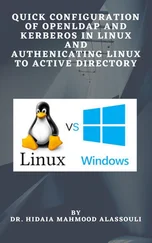1 ...7 8 9 11 12 13 ...54 Today, BSD versions are available from three major projects: FreeBSD, NetBSD, and OpenBSD. People generally characterize FreeBSD as the easiest to use, NetBSD as available on the most computer hardware platforms, and OpenBSD as fanatically secure. Many security-minded individuals still prefer BSD to Linux. Also, because of its licensing, BSD code can be used by proprietary software vendors, such as Microsoft and Apple, who don't want to share their operating system code with others. MacOS is built on a BSD derivative.
Linus builds the missing piece
Linus Torvalds started work on Linux in 1991, while he was a student at the University of Helsinki, Finland. He wanted to create a UNIX-like kernel so that he could use the same kind of operating system on his home PC that he used at school. At the time, Linus was using Minix, but he wanted to go beyond what the Minix standards permitted.
As noted earlier, Linus announced the first public version of the Linux kernel to the comp.os.minixnewsgroup on August 25, 1991, although Torvalds guesses that the first version didn't actually come out until mid-September of that year.
Although Torvalds stated that Linux was written for the 386 processor and probably wasn't portable, others persisted in encouraging (and contributing to) a more portable approach in the early versions of Linux. By October 5, 1991, Linux 0.02 was released with much of the original assembly code rewritten in the C programming language, which made it possible to start porting it to other machines.
The Linux kernel was the last—and the most important—piece of code that was needed to complete a whole UNIX-like operating system under the GPL. So when people started putting together distributions, the name Linux and not GNU is what stuck. Some distributions, such as Debian, however, refer to themselves as GNU/Linux distributions. (Not including GNU in the title or subtitle of a Linux operating system is also a matter of much public grumbling by some members of the GNU project. See https://gnu.org.)
Today, Linux can be described as an open source UNIX-like operating system that reflects a combination of SVID, POSIX, and BSD compliance. Linux continues to aim toward compliance with POSIX as well as with standards set by the owner of the UNIX trademark, The Open Group ( https://opengroup.org).
The nonprofit Open Source Development Labs, renamed the Linux Foundation after merging with the Free Standards Group ( https://linuxfoundation.org), which employs Linus Torvalds, manages the direction today of Linux development efforts. Its sponsors list is like a Who's Who of commercial Linux system and application vendors, including IBM, Red Hat, SUSE, Oracle, HP, Dell, Computer Associates, Intel, Cisco Systems, and hundreds of others. The Linux Foundation's primary charter is to protect and accelerate the growth of Linux by providing legal protection and software development standards for Linux developers.
Although much of the thrust of corporate Linux efforts is on enterprise computing, huge improvements are continuing in the desktop arena as well. The KDE and GNOME desktop environments continuously improve the Linux experience for casual users. Newer lightweight desktop environments such as Chrome OS, Xfce, and LXDE now offer efficient alternatives that today bring Linux to thousands of netbook owners.
Linus Torvalds continues to maintain and improve the Linux kernel.
For a more detailed history of Linux, see the book Open Sources : Voices from the Open Source Revolution (O'Reilly, 1999). The entire first edition is available online at
https://oreilly.com/openbook/opensources/book/
OSI open source definition
Linux provides a platform that lets software developers change the operating system as they like and get a wide range of help creating the applications they need. One of the watchdogs of the open source movement is the Open Source Initiative, or OSI ( https://opensource.org).
Although the primary goal of open source software is to make source code available, other goals of open source software are also defined by OSI in its open source definition. Most of the following rules for acceptable open source licenses serve to protect the freedom and integrity of the open source code:
Free distribution: An open source license can't require a fee from anyone who resells the software.
Source code: The source code must be included with the software, and there can be no restrictions on redistribution.
Derived works: The license must allow modification and redistribution of the code under the same terms.
Integrity of the author's source code: The license may require that those who use the source code remove the original project's name or version if they change the source code.
No discrimination against persons or groups: The license must allow all people to be equally eligible to use the source code.
No discrimination against fields of endeavor: The license can't restrict a project from using the source code because it is commercial, or because it is associated with a field of endeavor that the software provider doesn't like.
Distribution of license: No additional license should be needed to use and redistribute the software.
License must not be specific to a product: The license can't restrict the source code to a particular software distribution.
License must not restrict other software: The license can't prevent someone from including the open source software on the same medium as non-open source software.
License must be technology neutral: The license can't restrict methods in which the source code can be redistributed.
Open source licenses used by software development projects must meet these criteria to be accepted as open source software by OSI. About 70 different licenses are accepted by OSI to be used to label software as “OSI Certified Open Source Software.” In addition to the GPL, other popular OSI-approved licenses include the following:
LGPL: The GNU Lesser General Public License (LGPL) is often used for distributing libraries that other application programs depend upon.
BSD: The Berkeley Software Distribution License allows redistribution of source code, with the requirement that the source code keep the BSD copyright notice and not use the names of contributors to endorse or promote derived software without written permission. A major difference from GPL, however, is that BSD does not require people modifying the code to pass those changes on to the community. As a result, proprietary software vendors such as Apple and Microsoft have used BSD code in their own operating systems.
MIT: The MIT license is like the BSD license, except that it doesn't include the endorsement and promotion requirement.
Mozilla: The Mozilla license covers the use and redistribution of source code associated with the Firefox web browser and other software related to the Mozilla project ( https://www.mozilla.org/en-US/). It is a much longer license than the others just mentioned because it contains more definitions of how contributors and those reusing the source code should behave. This includes submitting a file of changes when submitting modifications and that those making their own additions to the code for redistribution should be aware of patent issues or other restrictions associated with their code.
The end result of open source code is software that has more flexibility to grow and fewer boundaries in how it can be used. Many believe that the fact that numerous people look over the source code for a project results in higher-quality software for everyone. As open source advocate Eric S. Raymond says in an often-quoted line, “Given enough eyeballs, all bugs are shallow.”
Читать дальше












